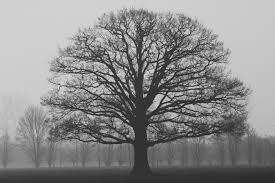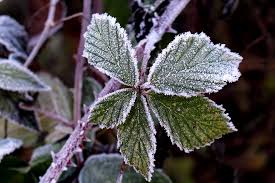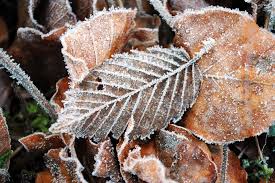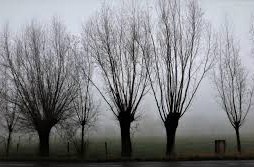18 January 2018
The Blues?
The greys, more likely.
By Lynda Goetz.
 According to the Huffpost blog by Debra Devi, the origin of the term ‘the blues’ may have to do with a 17thC English expression referring to the ‘intense visual hallucinations that can accompany severe alcohol withdrawal’. Interestingly, however, now that we can to some extent ‘map’ the brain, it would seem that a PET scan of brain activity of a person with depression really does appear blue, compared with the yellow colours evident in the brain of a person who is not depressed. Nevertheless I have been convinced since my poetry-writing days at university that the colour of gloom and depression is grey.
According to the Huffpost blog by Debra Devi, the origin of the term ‘the blues’ may have to do with a 17thC English expression referring to the ‘intense visual hallucinations that can accompany severe alcohol withdrawal’. Interestingly, however, now that we can to some extent ‘map’ the brain, it would seem that a PET scan of brain activity of a person with depression really does appear blue, compared with the yellow colours evident in the brain of a person who is not depressed. Nevertheless I have been convinced since my poetry-writing days at university that the colour of gloom and depression is grey.
Like many others, I’ve never been a huge fan of the months of January and February in England. As a child, the fact that my birthday came at the end of the first month of the year meant there was at least something to look forward to; nowadays even that has become a negative. Another year past? Where on earth did that go? What, if anything, have I achieved? Are those more wrinkles I can see in the glare of the bathroom mirror? Oh God, it’s nearly the end of January and I STILL haven’t done my tax return (although I did start with all the best intentions one rainy day last summer). I can’t believe the dogs really want to go out. It’s blowing a hooley (or a ‘hoolie’ – no-one seems quite sure of the origins or spelling of this one) and pouring with rain. Friends send WhatsApp messages from beaches in New Zealand or the Caribbean featuring white sand, beautiful blue skies and shimmering aqua seas. Others send postcards (at least they did in the Old Days) from improbably picturesque Alpine villages covered in feet of glistening white snow with ancient church spires pointing up into cloudless blue skies or else skiers powering their way down impressively steep mountains (also, of course, against a backdrop of blue skies), sending clouds of white powder into the air in their wake. Meanwhile, here in the South of England, it is simply, mostly, irredeemably grey.
 Can you imagine being a tourist who makes the mistake of visiting any part of the English countryside in February, or, worse still, one of those poor Jamaicans who, after the Second World War, moved to the ‘Mother Country’ to escape economic hardship in their own island? How grey and dreary it must have appeared to all those Hortenses and Michaels (Andrea Levy A Small Island) who came over here seeking their fortune. Central parts of cities such as London at least have lights and life, even in the grey of post-Christmas winter, but the suburbs are pretty grim, and as for the rest of the country… The English countryside, so stunning in the spring, so seductive in the summer, so alive with colour in the autumn, is hardly welcoming in the winter. The spiky skeletons of the deciduous trees stand brown-grey against the white-grey sky. The grey-brown hedgerows surround brown fields of pale maize stubble, and curtains of murky grey cloud descend over the hills. On the verges dark brown mud imprinted with car and tractor tyres oozes onto the road, building a central reserve where straggly weeds and grass struggle to gain a foothold. Everything seems dank and grey.
Can you imagine being a tourist who makes the mistake of visiting any part of the English countryside in February, or, worse still, one of those poor Jamaicans who, after the Second World War, moved to the ‘Mother Country’ to escape economic hardship in their own island? How grey and dreary it must have appeared to all those Hortenses and Michaels (Andrea Levy A Small Island) who came over here seeking their fortune. Central parts of cities such as London at least have lights and life, even in the grey of post-Christmas winter, but the suburbs are pretty grim, and as for the rest of the country… The English countryside, so stunning in the spring, so seductive in the summer, so alive with colour in the autumn, is hardly welcoming in the winter. The spiky skeletons of the deciduous trees stand brown-grey against the white-grey sky. The grey-brown hedgerows surround brown fields of pale maize stubble, and curtains of murky grey cloud descend over the hills. On the verges dark brown mud imprinted with car and tractor tyres oozes onto the road, building a central reserve where straggly weeds and grass struggle to gain a foothold. Everything seems dank and grey.
Some people end up with SAD (‘seasonal affective disorder’), sometimes known as ‘winter depression’. The NHS website advises on symptoms, causes and treatment. All set to add jokily that this is hardly likely to be a Southern Hemisphere problem, I check, only to discover that there is a type of SAD which can hit those living near the equator, as summer heat and humidity increases. Oh well, I suppose there must be some downsides to too much heat, light and colour. It’s just rather hard to see what they are when things here are so drab and colourless.
 Dragging my feet as the dogs (joyous at being allowed out of the house) race ahead, peering enthusiastically and with curiosity into holes in hedges or animal paths snaking up the verges, I suddenly realise there may be an answer, as I notice the minute, delicately-veined leaves of what I think may be violets. I need to stop looking at the whole; at the misty horizons and empty ploughed fields, and focus on the immediate. I need in effect to become more Japanese about things. When I lived for a year in Japan, one of the things I came away with was the ability of the Japanese to focus on detail. As an example, they would exclaim about the beauty of a camellia flower; they would look at the perfection of the one individual flower and compose a haiku in its honour. Most of the English would probably be looking at ‘the big picture’. They would see the surroundings in which the poor camellia shrub was trying to thrive; the dull grey wall creating its backdrop and the close-meshed fence in front of it; the brown spotted leaves or the cut-outs made by caterpillars; the dying petals of a nearby flower or the frost-nipped bud alongside. However, if you focus on the beauty of the single flower, none of the rest matters. That was what I needed to do, faced with the all-consuming grey palette of the English countryside in winter; I needed to look more closely.
Dragging my feet as the dogs (joyous at being allowed out of the house) race ahead, peering enthusiastically and with curiosity into holes in hedges or animal paths snaking up the verges, I suddenly realise there may be an answer, as I notice the minute, delicately-veined leaves of what I think may be violets. I need to stop looking at the whole; at the misty horizons and empty ploughed fields, and focus on the immediate. I need in effect to become more Japanese about things. When I lived for a year in Japan, one of the things I came away with was the ability of the Japanese to focus on detail. As an example, they would exclaim about the beauty of a camellia flower; they would look at the perfection of the one individual flower and compose a haiku in its honour. Most of the English would probably be looking at ‘the big picture’. They would see the surroundings in which the poor camellia shrub was trying to thrive; the dull grey wall creating its backdrop and the close-meshed fence in front of it; the brown spotted leaves or the cut-outs made by caterpillars; the dying petals of a nearby flower or the frost-nipped bud alongside. However, if you focus on the beauty of the single flower, none of the rest matters. That was what I needed to do, faced with the all-consuming grey palette of the English countryside in winter; I needed to look more closely.
 It works. On my next walk I spotted a tiny out-of-season bramble flower; a delicate pale pinky-white marvel amongst the invasive (but evergreen) ivy. On another day I admired the swirls of frost-like frozen water where horses had created deep muddy puddles near the field gate; on yet another I compared the feathery, fern-like leaves of the emerging cow parsley anthriscus sylvestris with the palmate leaves of the anemone nemerosa; a solitary tree against the skyline; on one of the rarer frosty mornings there was the intricate lacework of white ice crystals edging all the different greens of the leaves at my feet; from spikes to hearts. One day a field which had been empty for months was, as if miraculously, filled with bleating sheep and lambs; each, if seen close enough, slightly different; each anxious, as the dogs (well-trained to ignore them) walked past or paused, curious at the sudden appearance, in what had been a familiar place, of unexpected new life.
It works. On my next walk I spotted a tiny out-of-season bramble flower; a delicate pale pinky-white marvel amongst the invasive (but evergreen) ivy. On another day I admired the swirls of frost-like frozen water where horses had created deep muddy puddles near the field gate; on yet another I compared the feathery, fern-like leaves of the emerging cow parsley anthriscus sylvestris with the palmate leaves of the anemone nemerosa; a solitary tree against the skyline; on one of the rarer frosty mornings there was the intricate lacework of white ice crystals edging all the different greens of the leaves at my feet; from spikes to hearts. One day a field which had been empty for months was, as if miraculously, filled with bleating sheep and lambs; each, if seen close enough, slightly different; each anxious, as the dogs (well-trained to ignore them) walked past or paused, curious at the sudden appearance, in what had been a familiar place, of unexpected new life.
The snow drops were already showing themselves before Christmas in this part of the country. It will not be that long before the daffodils, planted around fields and on verges in honour of the millennium, start making their annual reappearance. In the meantime, although I would prefer a ‘proper’ snowy, white winter wonderland of the sort that features on Christmas cards, or, indeed a variety of oceanic blues, since grey seems to be the predominant colour of January and February, I will try to be Japanese about it and look at the detail. It may just be a way of stopping ‘the winter greys’ getting at me.


